ROOM: The Space magazine is one of the leading magazines on space exploration, technology and industry. At ROOM, we share a common dream – advancement of peaceful space exploration for the benefit of humankind, all while bringing you fascinating articles on an assortment,a range of popular topics. Our authors include experts and industry leaders from all over the world, which lets us bring you the newest and detailed information about kepler confirmed exoplanets.
 November 2018
How many people does it take to colonise an exoplanet?
November 2018
How many people does it take to colonise an exoplanet?
... stars began to be replaced with real, definite data. Twenty-three years later, the number of confirmed exoplanets stands in excess of 3,700. The possibility of finding a truly Earth-like planet is now, ... surface. Located at 4.2 light years (40,000 billion km), Proxima Centauri b is almost an ideal destination - as far as exoplanets go. But while this distance may be small by astronomical standards, it remains utterly vast on the human scale. The...
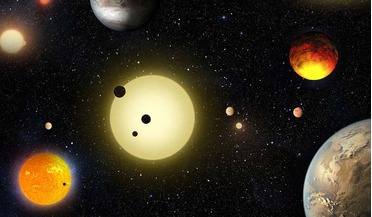 11 May 2016
Kepler scientists announce a major increase in confirmed exoplanet numbers
11 May 2016
Kepler scientists announce a major increase in confirmed exoplanet numbers
...24hrs a day, 7 days a week, 365 days a year looking for the tell-tale sign of a would be exoplanet. The technique Kepler uses is known as the transit method and it works by measuring the dip in star light as a planet passes... has been imperative to find a quicker solution and narrow down the search for true exoplanet signals. Batalha explains that Kepler achieves this by using statistics to sample the Galaxy to help understand how many planets ...
 April 2019
Scanning the skies for exoplanets
April 2019
Scanning the skies for exoplanets
...their host stars in 13 days or less; these are considered short orbital period exoplanets. Conversely, Kepler was adept at finding exoplanets with orbital periods from 10 days up to a few hundred days, a .... Until we measure its density, we cannot be really sure that it is rocky,” says Dragomir. “If confirmed however, this Earth-sized exoplanet will be interesting to study further to determine whether it formed the way it is now, or whether it...
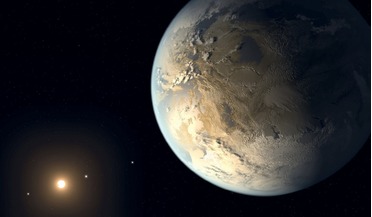 August 2018
Exoplanet census promises radical discoveries
August 2018
Exoplanet census promises radical discoveries
... or star in systems with more than one host star. The combination of the WFIRST exoplanet microlensing survey and Kepler’s transit survey will provide a complete statistical census of planets at all separations. This is...demonstrated by Sir Arthur Eddington in the famous 1919 solar eclipse expedition that provided the first observational confirmation of Einstein’s theory of gravity. The alignment needed to see this gravitational lensing effect by a...
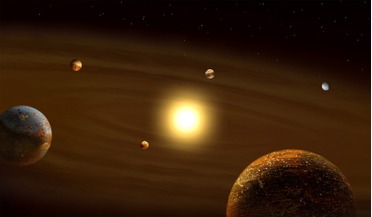 27 July 2019
Hundreds of new planet candidates detected by Kepler
27 July 2019
Hundreds of new planet candidates detected by Kepler
...not the only one making substantial discoveries. Although now officially retired, NASA’s first formidable exoplanet telescope – Kepler – has gone one better. Make that a few hundred better. By scanning through... title – K2 – and 15 months after being reassigned to its new stellar target, Kepler had racked up its 1,000th confirmed exoplanet discovery. Kepler’s K2 mission comprised of 19 ‘campaigns,’ lasting around 80 days each. These new discoveries...
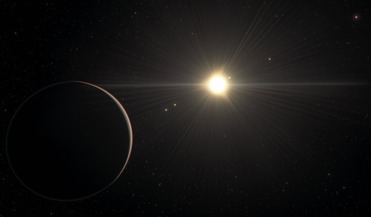 25 January 2021
Unique six-exoplanet system challenges theories of how planets form
25 January 2021
Unique six-exoplanet system challenges theories of how planets form
..., NASA’s Transiting Exoplanet Survey Satellite (TESS) has been busy searching the skies for exoplanets in orbit around the brightest dwarf stars. To date, the planet hunter has found 98 confirmed exoplanets and 2453 candidates waiting... to be verified. Exoplanet candidates which appear the most promising are put into the TESS Objects ...
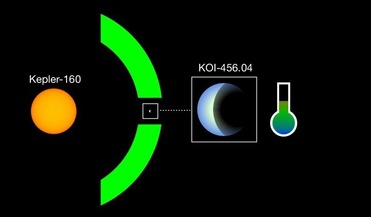 05 June 2020
Exciting exoplanet find around sun-like star
05 June 2020
Exciting exoplanet find around sun-like star
... worlds, detections of rocky worlds around Sun-like stars is comparatively rare, due to the techniques used to find exoplanets. But by improving on an old detection method, a team of German and US scientists have now found a ... is not new. It was discovered around ten years ago, followed by the confirmation of two exoplanets, called Kepler-160b and Kepler-160c, four years later. Both of these planets though are substantially bigger than Earth ...
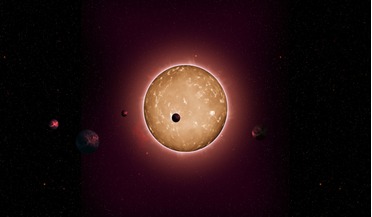 24 November 2021
Astronomers discover more than 350 possible new exoplanets
24 November 2021
Astronomers discover more than 350 possible new exoplanets
... around smaller, dimmer red dwarf stars instead. Dubbed K2, this “Second Light" mission lasted as long as Kepler’s first exoplanet hunt and bumped its count of surveyed stars up to more than 500,000. But, after nine years... colleagues. A fifth could be hiding too but data limitations have meant that the team were unable to confirm its existence. Other notable new discoveries include EPIC 249731291, an early-type F dwarf (or sub-giant) system...
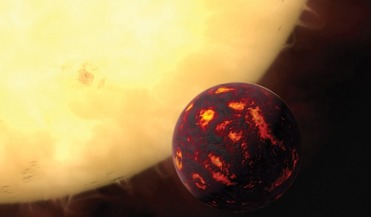 March 2017
Twinkle - a mission to unravel the story of planets in our galaxy
March 2017
Twinkle - a mission to unravel the story of planets in our galaxy
... NASA space missions such as GAIA, Cheops, PLATO, Kepler II and TESS will increase the number of known systems to tens of thousands. Exoplanets have been detected around every type of star and our... by Earth’s atmosphere in ground-based observations. The number of confirmed exoplanets discovered has dramatically increased recently. In 2016 the science team behind NASA’s Kepler spacecraft has announced a further 1,284 objects verified as being more...